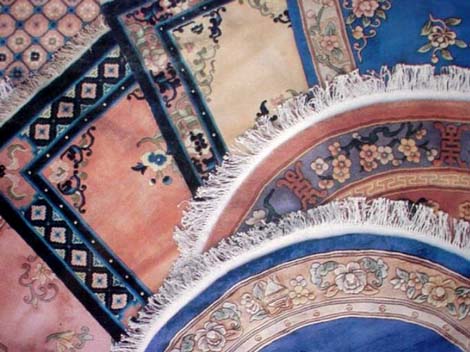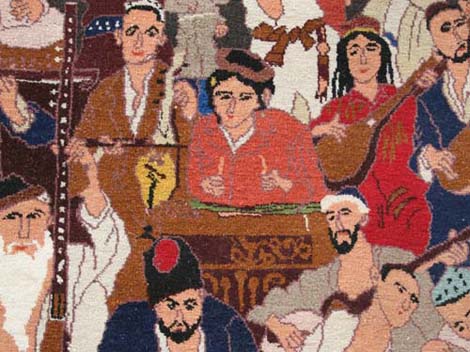
Large carpets, particularly large wool carpets, were not used in China until comparatively recent times. Rugs to cover the "Kang" or fire heated brick bed platform typical in North China were not uncommon at least as early Ming times. These rugs were typically divided to give a place to set a table on the Kang or designed to cover the entire Kang. Most of these rugs were made of felt and used camel hair, which was dyed black and red at the borders. The felt rugs, some silk and others wool, in the Shoso-in at Nara, Japan are probably the earliest examples of Chinese carpets and although dating is questioned may date back to Tang times.

The Ming period and far into that of the Qing Dynasty, woolen rugs for the "Kang", temple floor mats, prayer rugs and woolen hangings came from the northern border area of China. Gansu, Suiyuan, Shensi and Shanxi all provided rugs used in China as did many distant areas reached over the old Silk Road. The later areas included Tibet, Mongolia but also areas outside Chinese control. Northern Shanxi, Suiyuan and Ningxia were all famous for the quality of their carpets. These rugs were predominantly made from wool and camel hair, which were both abundant in these areas. An example of this work, which was also done in Buddhist designs, is a carpet from Lou Lan in Chinese Turkestan which is made of woolen pile and whose colors still remain bright despite the passage of time.
From historical records, it appears that no wool looms were in use in Beijing until the very early 1860s. In 1860, a Buddhist priest named Ho Chi-ching, started a weaving school at Paoku for the poor of Beijing. This proved successful and the school divided into a Western gate and Eastern gate schools. Later, the Western gate school moved to Tianjin where it developed a tradition of making very durable camel wool carpets decorated with simple geometrical patterns in red, blue and brown. In the later years of the 1800s, the quality of the rug making had deteriorated markedly. The Tianjin wool rug industry collapsed completely with the fall of the Qing dynasty. In the 1930s the rug industry was restarted in both Tianjin and Shanghai with the aid of western capital. In 1949, the tradition was further transplanted to Hong Kong and other points in Asia where it carries on the tradition through more modern techniques.
Source:
http://traditions.cultural-china.com/en/16Traditions4970.html





